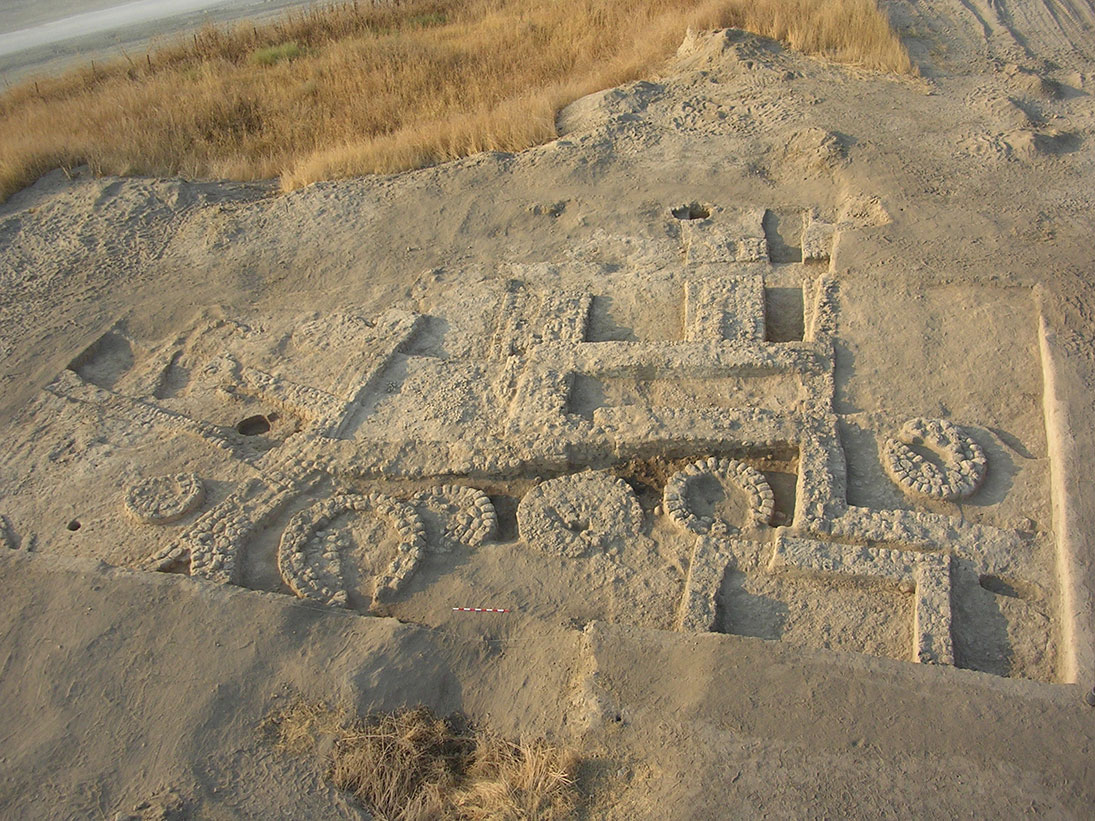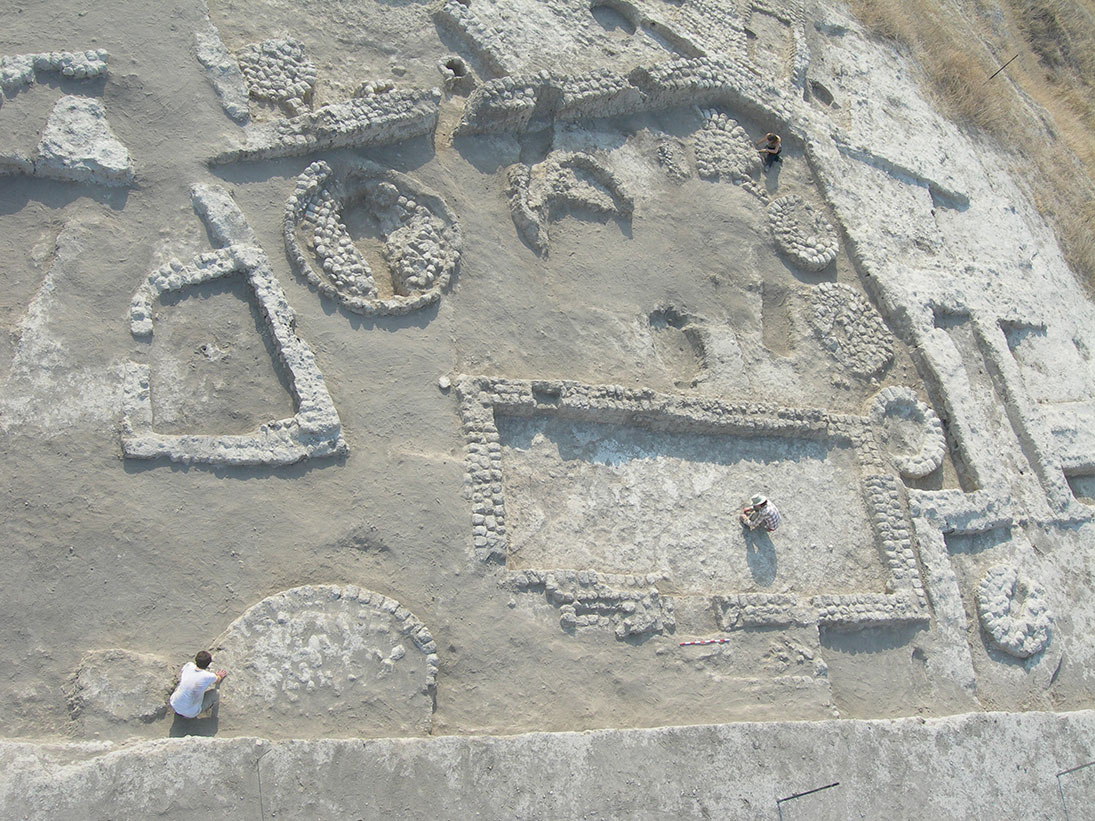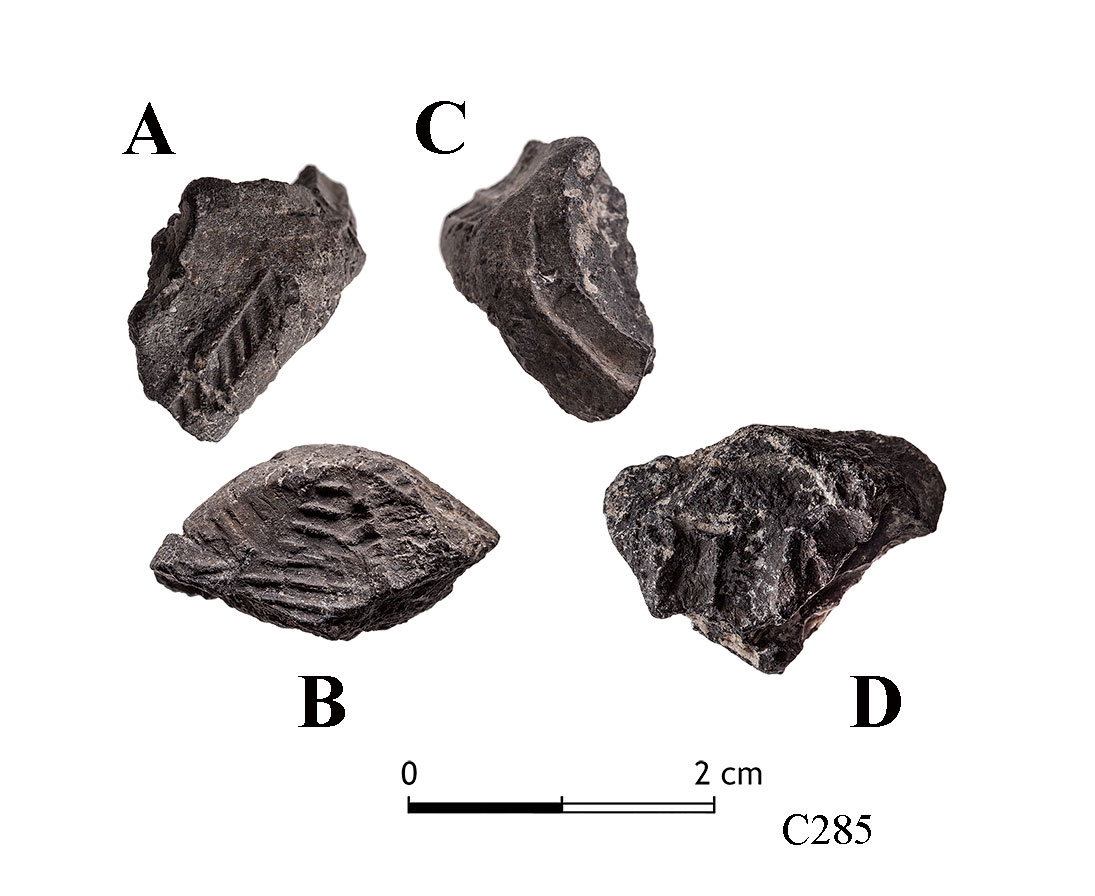Beit She'an Valley: Unique Evidence Reveales Form of Administration from the 5th Millennium BCE
A rare seal imprint that was found is the earliest evidence in Israel for use seals for signing shipments or locking doors. • The seal dates to the Middle Chalcolithic period, about two thousand years before writing appeared.
A rare discovery in northern Israel: a seal imprint (stamp), dated back 7000 years ago, with imprints of two seals that were decorated with geometric patterns, was recently identified by the Hebrew University's archaeological excavations in the prehistoric village of Tel Tzaf in the Beit She'an Valley. The discovery was made in the early 2000s (2004-2007), when the excavation was conducted by Prof. Yossi Garfinkel of the Institute of Archeology at the Hebrew University together with two of his students, who eventually became senior researchers at Ariel University - Prof. David Ben-Shlomo and Dr. Michael Freikman. About 150 stamps without imprints, but recently researchers have realized that one of them is a one-time and historic discovery, the findings of which were published in the scientific journal Levant.
 |
Stamp impressions - stamps - are small pieces of clay, known in historical times for the purpose of signing letters, and are designed to maintain the discretion of the letter writers and prevent others from reading their contents on the way to their destination. The stamps, made of clay, left fascinating testimonies of historical events and background about the people who stood behind them. The stamp found in Tel Tzaf is particularly moving as it is the first evidence of its use as a means of sealing shipments or closing silos and barns. As soon as they opened the barn doors on which the stamp was pasted - it broke, so it was clear to the webmasters that someone else had visited them, perhaps robbed them. "Even today the IEC or Gihon close their watches using Palumba, to prevent changes initiated by consumers. It turns out that this method was practiced in Israel 7,000 years ago, an administrative and administrative means by which cheating and theft can be prevented - this is definitely not an esoteric technique," explains this week. Prof. Garfinkel.
Since this is a tiny item that is less than an inch in size (!), It only recently became clear to the excavation team after many deciphering efforts that the fragment they found is certainly a seal. According to the researchers, this is the earliest evidence in Israel for the use of a seal for the purpose of signing doors or deliveries, with the seal being dated (using the carbon method 14) to the Middle Chalcolithic period (4500-5200 BC). According to the article, the stamp is meant to close off anything. The research team further clarifies that the bulla has been excellently preserved because the Beit She'an Valley is a dry place and the soil is friendly to archaeologists.
 |
Two seal impressions with markings of symmetrical, parallel and uniform lines were identified on the stamp. Many stamps have been found in the last decade in Jerusalem, some of which bear the imprint of a person, sometimes even a figure that appears in the biblical tradition. In Tel Tzaf, this is the period before the writing was written, so no names of people were found on the stamps. In addition, since it is a stamp on which two stamps have been stamped, this implies a sophisticated management system that sometimes involves the involvement of two different people.
Sealing groceries sent in containers or agricultural produce in silos, using the stamp, probably had two purposes - 'internal and' external '. The "internal" purpose allows the owners of the silos and warehouses on the site to follow the events of the opening of the storage facilities and the storage of the products within them. The 'external' purpose refers to securing shipments sent to the site from a distance. Prof. Garfinkel emphasizes the great extent of the use of stamps in general, and the stamp bearing the two imprints found on the site. The impressive underwriting located at Tel Tzaf may reflect the development of the economy at that time, the need to secure the delivery of goods and storage at a specific site, and ensure access only to licensees.
A petrographic analysis of the stamp, which examines the composition of the soil from which it was made, indicates that the clay is not local, and came from a distance of at least 10 km from the excavation site. The stamps are not historically unique, stamps decorated with geometric patterns are known in the area from earlier periods, from about 8,500 years ago, from the Neolithic-Ceramic period.
 |
Apart from the stamp, particularly rare objects were found at the site, such as a metal vessel considered the oldest found in the country, a concentration of 2,600 beads from ostrich eggshells, over 100 stone beads from exotic minerals from the Middle East, obsidian - volcanic glass from Anatolia, and even potsherds typical of obeid culture. Belonging to the end of prehistoric times in Mesopotamia (no such potsherds have ever been found in the country). "On this site we have evidence of links with the regions of Mesopotamia, Turkey, Egypt and the Caucasus. There is no prehistoric site in the entire Middle East that has international trade ties to such vast areas," Prof Garfinkel explained this week.
The quantities of grain, and probably also other types of groceries stored in storage facilities at Tel Tzaf, were on an unprecedented scale. There were houses where 5-4 silos were found that could store 30-20 tons of seeds - with one family needing food in the amount of only about a ton and a half of seeds per year. "It's crazy, no one has to eat so much to survive," notes Prof Garfinkel. "A family that grows and harvests fields, is not able to produce so much food. This means that homeowners in Tel Tzaf were unusually rich, and accumulated food produced by other people. Social in such an ancient period. There are quite a number of other sites from this period in the Jordan Valley, but no storage structures like those found in Tel Tzaf were found. No stamps were found in these sites, and no imported luxury items were found from all over the Middle East. If so, the important center in the region. " It seems that in order to manage the large amount of agricultural produce, and of shipments of groceries to the site, the residents developed a system of administration of stamps and stamps, which made it possible to monitor economic activity.
 |
The surplus of agricultural produce on the one hand, and the findings of finds that came from all over the ancient East on the other hand, indicate that Tel Tzaf served as a major trading point for the exchange of goods. Residents of the site were able to trade in surplus agricultural produce with small regional communities, and with nomads, who brought with them rare and exotic goods from afar. It is possible that the use of stamps and stamps is evidence of the first step taken at the site to build trading methods and build a network of moving products from place to place. The researchers conclude that society in the Middle Chalcolithic period included a complex system of interactions between communities, rather than a collection of individual sites that each stood on its own. "We hope that the ongoing excavations at Tel Tzaf, and at other sites of the period, will yield additional evidence, which will help to understand the phenomenon of the beginning of the administration in the southern Levant," notes Prof. Garfinkel.



